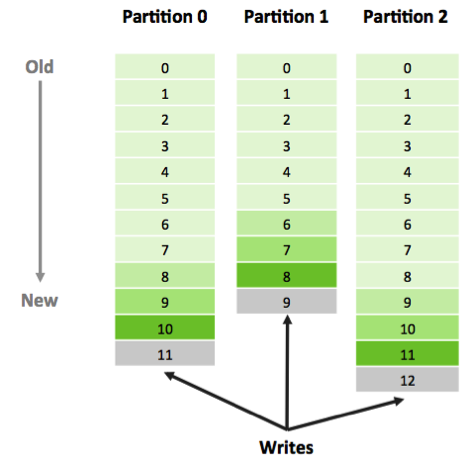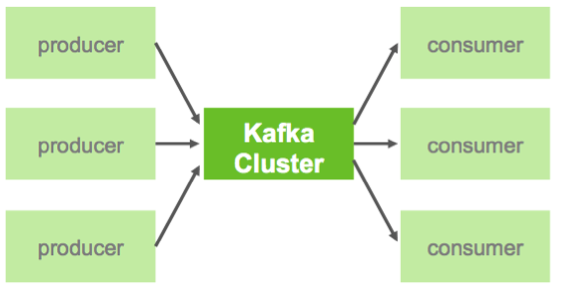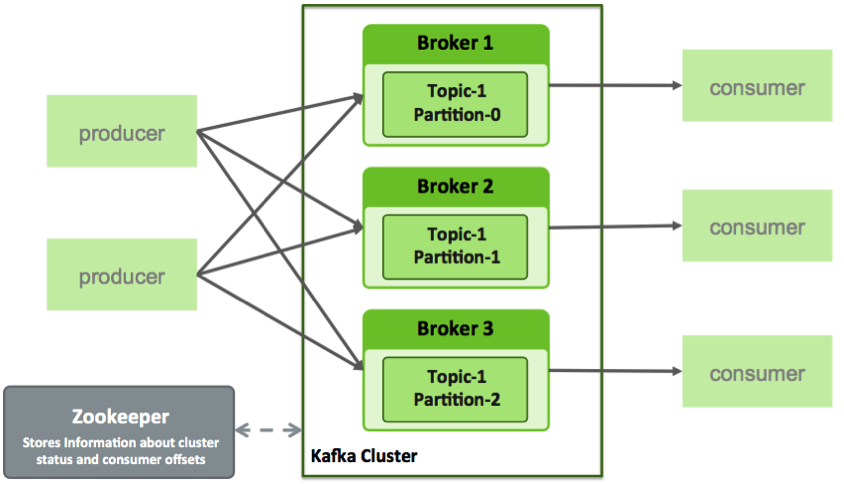Chapter 1. Introduction to Kafka
Apache Kafka is a fast, scalable, durable, fault-tolerant publish-subscribe messaging system. Common use cases include:
Messaging
Website activity tracking
Metrics collection and monitoring
Log aggregation
Stream processing
Event sourcing
Commit logs
Kafka works with Apache Storm and Apache Spark for real-time analysis and rendering of streaming data. The combination of messaging and processing technologies enables stream processing at linear scale.
For example, Apache Storm ships with support for Kafka as a data source using Storm’s core API or the higher-level, micro-batching Trident API. Storm’s Kafka integration also includes support for writing data to Kafka, which enables complex data flows between components in a Hadoop-based architecture. For more information about Apache Storm, see the Storm User Guide.
Kafka operates on streams of messages. Four main components move messages in and out of Kafka:
Table 1.1. Kafka Components
Kafka Component | Description |
|---|---|
Topic |
A user-defined category (or feed name) to which messages are published. |
Producer | A process that publishes messages to one or more topics. |
Consumer | A process that subscribes to one or more topics and processes the feeds of messages from those topics. |
Broker | A Kafka server that manages the persistence and replication of message data (i.e., the commit log). |
Topics
Topics consist of one or more partitions. Kafka appends new messages to a partition in an ordered, immutable sequence. Each message in a topic is assigned a unique, sequential ID called an offset.

Producers
Kafka Producers publish messages to topics. The producer determines which message to assign to which partition within the topic. Assignment can be done in a round-robin fashion to balance load, or it can be based on a semantic partition function.
Consumers
Kafka Consumers keep track of which messages have already been consumed, or processed, by keeping track of an offset, a sequential id number that uniquely identifies a message within a partition. Because Kafka retains all messages on disk for a configurable amount of time, Consumers can rewind or skip to any point in a partition simply by supplying an offset value.
Brokers and Clusters
A Kafka Cluster consists of one or more Brokers (server processes). Producers send messages to the Kafka Cluster, which in turn serves them to Consumers.

Performance
Partition support within topics provides parallelism within a topic. In addition, because writes to a partition are sequential, the number of hard disk seeks is minimized. This reduces latency and increases performance.
Kafka Brokers scale and perform well in part because Brokers are not responsible for keeping track of which messages have been consumed. The message Consumer is responsible for this. In traditional messaging systems such as JMS, the Broker bears this responsibility, which severely limits the system’s ability to scale as the number of Consumers increase. Kafka's design eliminates the potential for back-pressure when consumers process messages at different rates.
For Kafka Consumers, keeping track of which messages have been consumed is simply a matter of keeping track of the offset -- the sequential id that uniquely identifies a message within a partition. Because Kafka retains all messages on disk (for a configurable amount of time), Consumers can rewind or skip to any point in a partition simply by supplying an offset value.

Example
For an example that simulates the use of streaming geo-location information (using a previous version of Kafka), see Simulating and Transporting the Real-Time Event Stream with Apache Kafka.

